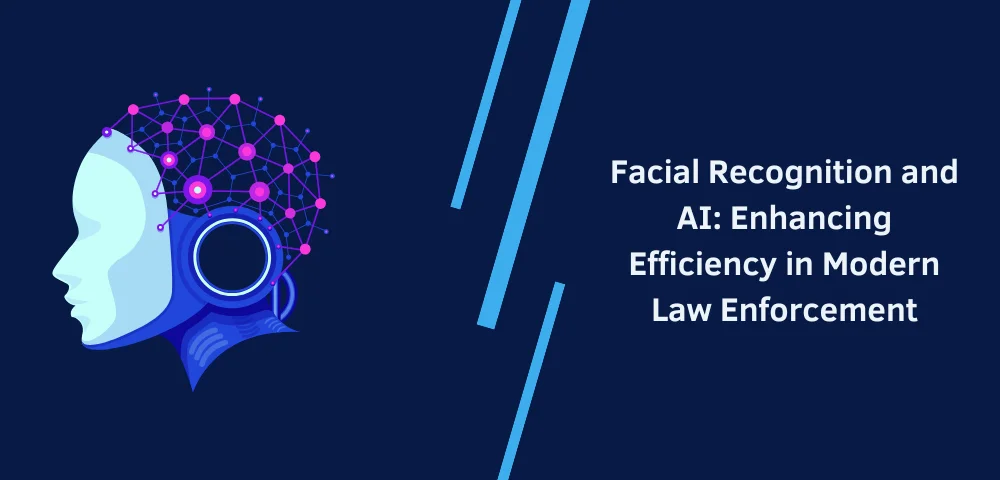Facial recognition technology (FRT), coupled with artificial intelligence (AI), has dramatically transformed the landscape of law enforcement in recent years. As cities across the UK grapple with rising crime rates and the need for heightened security, authorities are increasingly turning to these advanced technologies. The potential benefits of FRT are vast, from improving crime-solving rates to streamlining identification processes. However, its implementation is not without challenges and ethical considerations.
Understanding Facial Recognition Technology
At its core, facial recognition technology works by mapping an individual’s facial features and comparing them to a database of known faces. This process typically involves intricate algorithms that analyse a variety of factors, such as the distances between key facial landmarks. As the technology has matured, its accuracy and deployment capabilities have improved significantly, making it an appealing tool for law enforcement agencies in the UK.
As security is paramount, the adoption of FRT represents an innovative approach to keeping communities safe. For instance, during large public events, law enforcement can use FRT to identify individuals who may pose a threat, thereby preventing potential incidents before they escalate. Policymakers and law enforcement officials are increasingly discussing the growing role of AI in modern policing. This exploration extends beyond FRT, encompassing a range of applications that harness data analytics, predictive policing, and criminal profiling.
The Advantages of Facial Recognition in Law Enforcement
One undeniable benefit of facial recognition technology is its ability to enhance efficiency. By automating the identification process, officers can reduce the time spent on manual checks and paperwork, allowing them to focus on more pressing matters. This efficiency can be critical in high-pressure situations where every second counts.
Crime Solving and Prevention
The capabilities of FRT in crime-solving is one of the most significant advantages. For example, when a crime is committed, law enforcement can quickly compare images from CCTV footage against a database, enabling rapid identification of suspects. In a case from London, police identified a suspect in a violent crime within hours using FRT—an impressive turnaround compared to traditional methods.
Moreover, the technology can act as a deterrent. Knowing that FRT is in use may discourage individuals from committing offences in the first place, as the likelihood of being caught increases significantly.
Integration with Other Technologies
Another advantage is how facial recognition seamlessly integrates with other emerging technologies. AI systems can work in conjunction with FRT to analyse vast amounts of data, identifying patterns and trends that might otherwise go unnoticed. This analytics-driven approach allows law enforcement agencies to allocate resources more effectively and even predict where crimes might occur.
Challenges and Ethical Considerations
Despite the myriad benefits, the deployment of facial recognition technology is fraught with challenges. Data privacy concerns loom large, with many questioning the ethics of monitoring individuals without their consent. The potential for misuse and discrimination cannot be overlooked. For instance, studies have shown that FRT systems can demonstrate bias, particularly against people of colour and women. This may lead to unjust profiling and further perpetuate systemic inequalities in policing.
Public Trust and Transparency
Building public trust is essential for the successful rollout of any technology in law enforcement. Transparency in how FRT is used, the data collected, and the processes involved in managing this information is crucial. Engaging with communities and ensuring that there are checks and balances in place can help alleviate fears and promote a positive relationship between the police and the populace.
It’s vital for law enforcement agencies to maintain rigorous oversight and ensure the technology is used responsibly. Establishing clear guidelines and regulations for its use is critical for all stakeholders.
Future Outlook for FRT and AI in Law Enforcement
Looking ahead, the role of facial recognition and AI in law enforcement, supported by innovations from leading AI agencies, is only set to grow. As technological advancements continue, we are likely to see even more refined systems capable of delivering exceptional accuracy and functionality. However, with these advancements comes the responsibility to ensure ethical considerations remain at the forefront.
Collaboration and Training
For FRT to reach its full potential, it must be paired with proper training for law enforcement personnel. Officers need to understand the nuances of the technology and be equipped to handle it judiciously. Moreover, collaboration between tech companies and law enforcement agencies can lead to innovations that respect civil liberties while enhancing public safety.
A Balanced Approach
Ultimately, the challenge lies in finding a balanced approach that takes advantage of the benefits of facial recognition technology while safeguarding individual rights. Continuous public discourse, coupled with strong governance and legislative frameworks, will play a vital role in shaping the future of AI and FRT.
In summary, the intersection of facial recognition, AI, and law enforcement offers promising opportunities for enhancing public safety and operational efficiency. While navigating potential pitfalls demands vigilance and ethical considerations, the advancement in these technologies can contribute significantly to safer communities. As this field evolves, it is crucial for all parties involved to engage in constructive dialogue and innovation, ensuring oversight accompanies progress.



